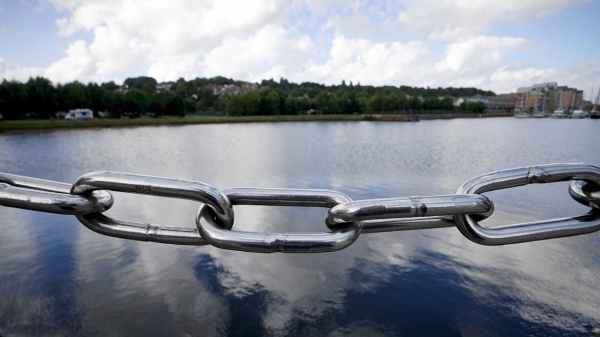From the financial sector to healthcare and State security, blockchain technology is here to make our operations more secure.
What is blockchain technology?
To acquire a basic understanding of what blockchain is, we have to ask the reader to imagine a spreadsheet shared by several people. The team can fill these spreadsheets with data but nobody can delete or modify what their teammates have written. It is, therefore, an information log system in which the data are organised and stored sequentially in blocks connected to each other.
Another mental effort: imagine a chain made up of links. Each of these links represents a block in blockchain technology. Hence the term “blockchain”. Each of these blocks contains information. This information may, for example, contain several transactions involving cryptocurrencies (such as Bitcoin) made by different persons at any given time. The information they contain may be the address of the person sending the funds and the recipient, the amount sent, details such as the date and fees, etc.
A perfectly secured chain of links
In addition to the information recorded on them, all the blocks in a chain contain a unique code called a “hash”. This code is unique for each block and it’s generated from the data introduced into the block. If the information in the block changes, even a single character, the hash will be completely different. This ensures the integrity of the recorded information and prevents unauthorised modifications.
Each block also integrates the hash of the immediately preceding block into its code. This is what we mean when we say that the blocks are interconnected; if any data in a block is modified, not only makes its hash change, so do all the subsequent hashes. The alarm bells would then ring. This system ensures that blockchain technology is transparent, immutable and secure.
Examples of blockchain technology
We indicated above that a log of transactions via bitcoins can be securely recorded in each of the blocks (links) of the chain. We can offer another more prosaic example to make things easier to understand.
Imagine you want to sell a car. Thanks to blockchain technology, you can record all the relevant information on the vehicle: the model, the year of its manufacture, its service history, the name of the new owner and so on. Every time the car changes ownership or its registration data are modified, a new block will be added to the chain. So, by creating a permanent log of the car’s ownership, scams and fraud can be prevented.
Another practical example is the authenticity of academic degrees. In addition to the corresponding physical diploma, these can be recorded as digital assets on a blockchain. Each degree will have a unique identification code and include important information such as the holder’s name and surnames, the institution issuing the qualification, the start and end date of the course taken, the marks obtained, etc. In the event that someone tries to forge the degree, the code will be changed.
Blockchain technology ultimately offers benefits for users such as eliminating intermediaries, reducing costs in operations and increasing opportunities for improving public services and business in different sectors. We can provide several examples in this regard:
- Financial sector: the use of Bitcoin for loans, insurance and asset management
- Health and medical care: confirming the authenticity and safety of medicines
- Renewable energy: tracking and certifying green energy production
- Democratic system: guaranteeing the integrity of electoral processes
What is decentralisation and why is it relevant to blockchain?
One of the main features of blockchain technology is the fact that it’s a decentralised system. What does this mean? That it isn’t a technology that depends on a centralised authority, as the control of the technology is distributed among several people. There’s no single entity that controls and supervises the network. Blockchain technology is made up of different participants that maintain the integrity and security of each blockchain.
It’s therefore less vulnerable technology. If one node in the network (in other words, one of the devices containing the full blockchain and involved in validating transactions, for example) fails, it doesn’t matter; the other nodes will continue to function and keep the network operational. Each node contains a copy of the blockchain, thus increasing the transparency of the transactions performed, as it doesn’t depend on a single entity controlling everything.
What does the consensus mechanism for this technology consists of?
All the participants in a blockchain network must agree on its content. In order to reach such an agreement, what’s known as a “consensus mechanism” is established. Thanks to this procedure, all the nodes in the network regard the information contained in a blockchain as valid and truthful. There are several consensus mechanisms, the most important of which is known as Proof of Work.
For a transaction to be added to the blockchain, the devices working on it (the network nodes) have to perform joint computational work. This work involves resolving a complex mathematical problem. The node that resolves the problem is known as the “miner”. The miner presents the solution to the other devices in the network and, if it’s correct, it’s accepted and it becomes part of the blockchain. This Proof of Work proves that the operation is genuine, a procedure that requires a great deal of computational power, making it difficult for someone to fraudulently modify the chain.









